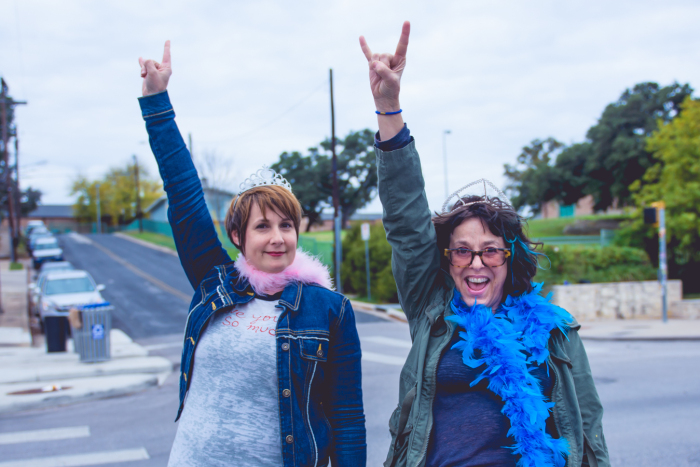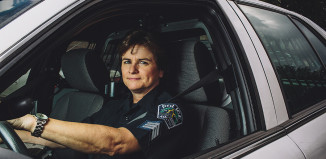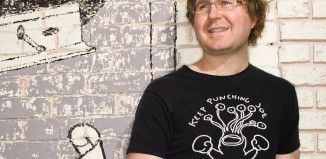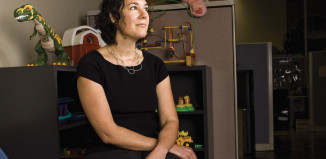One way to tell how long a person has been living in Austin is to mention a legendary figure named Leslie. Those fresh to the city will stare blankly, but Austinites of a certain vintage will light up – or frown – in recognition.
The gender-bending homeless man behind the name–and the thong, miniskirt, stilletos, fishnets, and beard–was as complex as he was iconic. Many who knew him during his heyday, during which he ran for mayor and served as a homeless activist, say Leslie’s ability to live authentically symbolized the openness and accepting embrace of Austin.
Now, after ten years of filming Leslie and the city he embodied – and one might argue, helped shape – two women are on the home stretch of their plan to make a film that captures Leslie’s humanity and share it with the world.
This past Wednesday I stopped by WET Salon on South Congress to speak with Tracy Frazier and Ruby C. Martin, co-directors of the new documentary. Frazier, who hails from San Antonio, has worked as a producer in Austin’s film industry since 2005 while Martin, a West Virginia native who is a senior stylist at WET, has a fine art background and expertise in experimental filmmaking. All that stands between their footage and the silver screen and festivals around the country for their feature-length documentary is post-production and distribution costs and the two are itching to dive into the editing process.
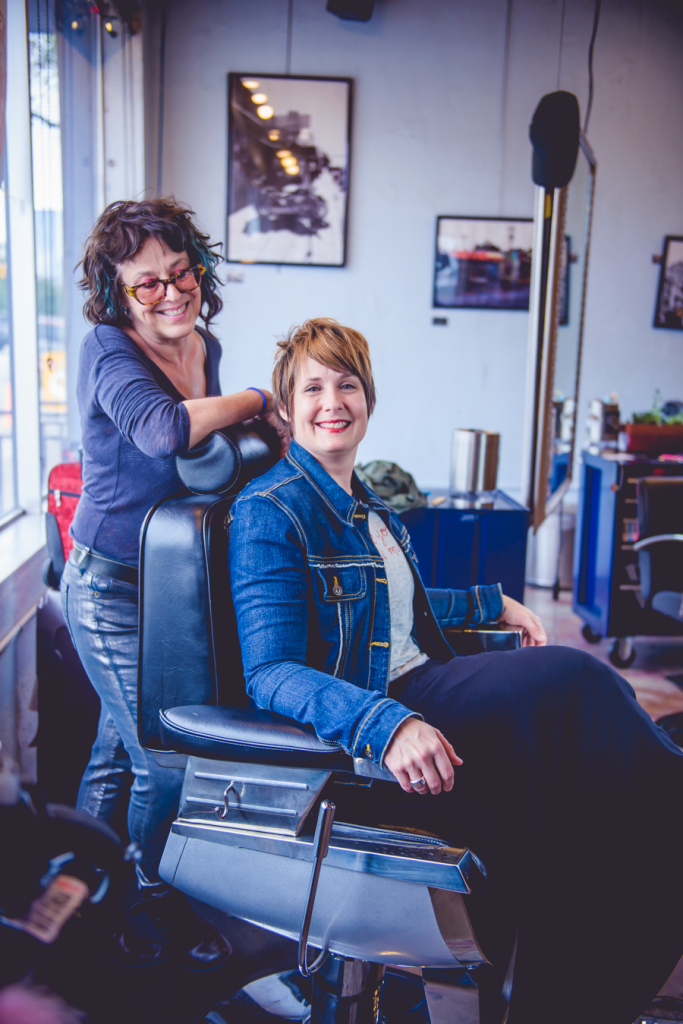
Photos by Devaki Knowles
I’m so excited to hear about the project. And I’m curious to hear how you actually came to know Leslie.
Ruby: Leslie was always trying to get people to do his hair. He peeked around the corner here [at WET Salon] one day and I just had this attitude of “Get over here.” As I got to know him I thought, I need to start shooting footage of him, and he agreed to it.
He didn’t fit into any mold. I suppose I was comfortable with him because I grew up in the hills of West Virginia. There was a guy there, Moose Kelly, who rode a bike with squirrel tails on both handlebars who Leslie reminded me of. One of these guys who is very different, and yet feels like family.
Tracy: I met him when I came on to the project after I met Ruby from running the gym downstairs and becoming friends with her. First he called me Stacy, then Trixie, then Trudy… I guess he always had all these people coming up to him wanting to meet him and wanting to be remembered, and at some point he just gave up.
I remember the first time I saw him, though. It was summer, and I was sitting at the bus stop waiting for the North Lamar to come and sweep me away. I got on the bus and it was real cool, real quiet. Then everyone starts chatting and gets up and goes to one side of the bus, and there’s Leslie, strutting down Guadalupe in fishnets. People were all looking at him, and at each other. He connected everyone on the bus.
Why do you think Leslie was such a unifying figure?
Tracy: Everyone has a Leslie story. In the same way people remember where they were on 9/11, people remember their first experience with him. When you saw him you got this sense of, “If he can be who he is, then I can be who I am” that epitomizes the way Austin is a place people can live authentically. Whether you got a kick out of him or were repulsed by him, he reflected back to you information about yourself — who you were or who you weren’t.
He was a stinker. Funny as hell, sad as hell. He’d flirt with men and women–always the innuendos! People resonated with him who enjoyed celebrating being themselves. There was also a sense of being with family with him. He reminded you of someone from your family who was the black sheep.
He had this very dark sense of humor. He’d say ‘so it goes’ all the time, that Vonnegut line from Slaughterhouse 5 about death and dying.
Would you just go follow him around and shoot?
Ruby: Yes. At first he was a diva, and then he was a friend. We’d just hang out and I’d have the camera on. He’d tell stories. He was living in a shed. I’d come over and we’d watch old Westerns.
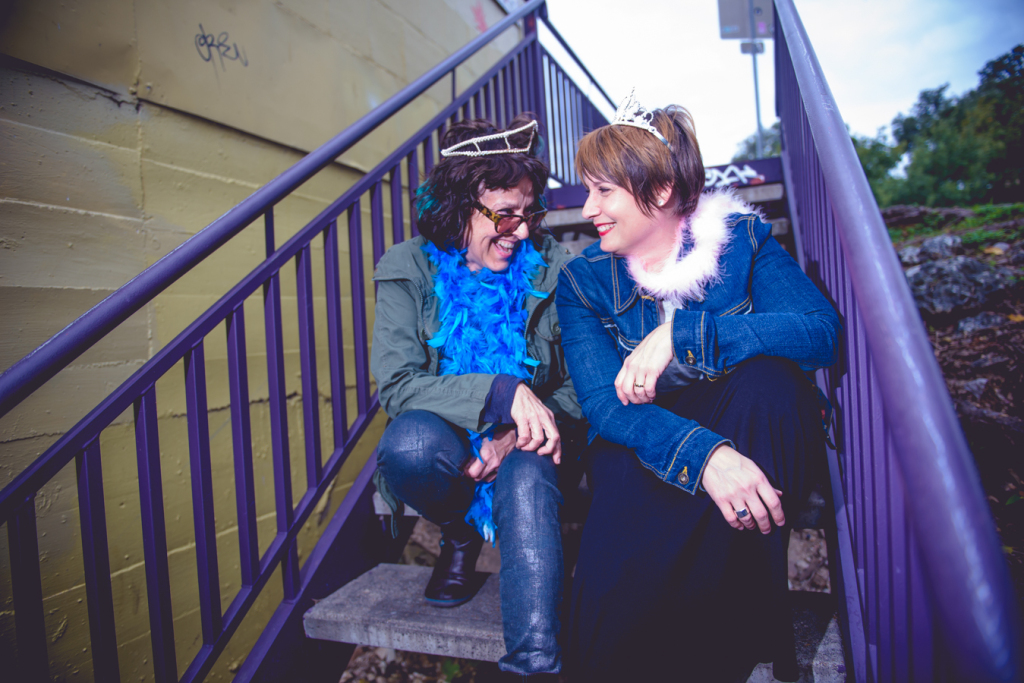
Photos by Devaki Knowles
What are you hoping to accomplish with your Kickstarter campaign? You haven’t actually made the film yet, right?
Tracy: Yes, that’s part of why it’s hard to talk about exactly what the film will look like yet. We have it mapped out but you don’t really know until you start editing. That’s where the post-production process begins. Editing is extremely important to artistically help you enter his world and tell a story. And our footage spans at least six different formats, from Beta tapes (from when Leslie did a show called “Dialogues about Homelessness”) to VHS, mini DV, HI8, iPhone, and HD.
Your Kickstarter page mentions Lee Daniel–the cinematographer for a slew of hits including Boyhood, Slacker, Dazed and Confused, Before Sunset, and other Richard Linklater films – is involved in your project. How did that happen? And what was it like to work with him?
Tracy: One day Ruby said this guy Lee said he’d help me. She knew him through WET salon. We were told, ‘Come on down here!’ because some of Leslie’s friends were having a birthday party at Ruta Maya for Leslie. Lee caught these moments of people looking at Leslie with pure joy. He shot most of our sit-down interviews and impressionistic scenes.
You can tell his work anywhere–it’s so organic, and has this beautiful floating quality. He doesn’t rush. He’s so easy with it and all of a sudden you can see the subtleties of that person.
I saw Patty Griffin is involved, too.
Tracy: Yes, Patty is another client at WET. She was in once and we told her about the project and asked if she would be interested in supporting us with her music. She was very simple about it. “Yes,” she said.
What has been the biggest challenge been of the project over the ten years you’ve been working on it?
Ruby: It takes a long time. And he was complicated. When he passed away in 2012, we took some time to regroup. But we’re back! And it’s going to be beautiful, seeing all this time happen in an hour. It’s beautiful and sad and beautiful again.
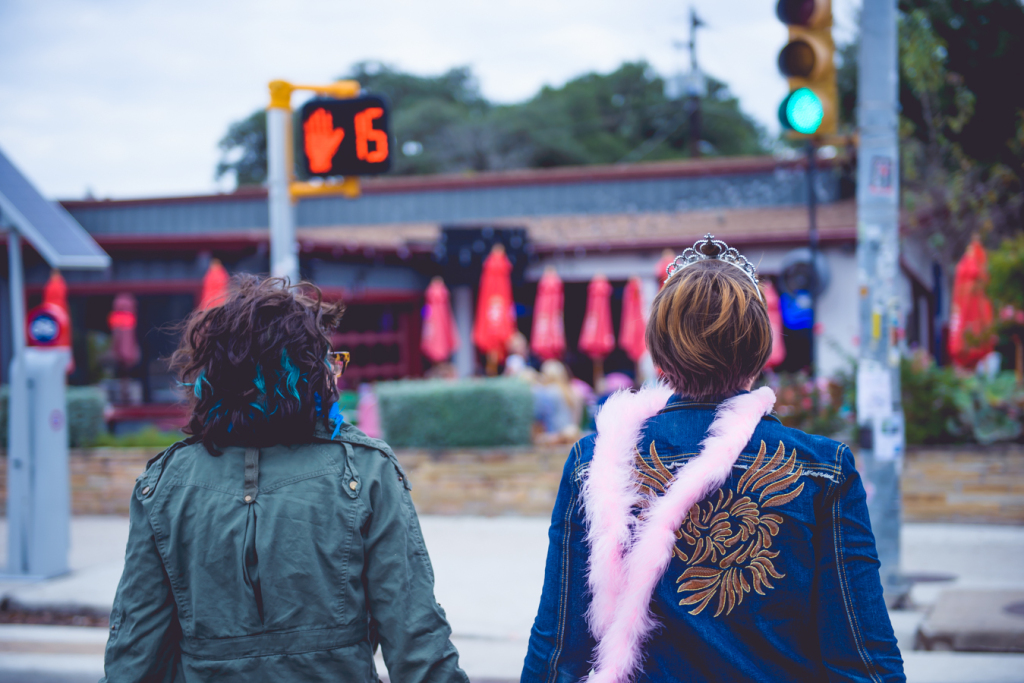
Photos by Devaki Knowles
What are your goals with the Kickstarter?
Tracy: We’d love to take the movie outside of Austin. It has no lack of universal themes and we feel it could play anywhere. Every big city has someone like Leslie if you look. It’ll be funny at times, but we know it will also explore the ways Leslie coped with change in his own life and in the city around him. His story is really our conduit for observing bigger concepts like the beauty of friendship, understanding one’s own sense of identity, being authentic, and dealing with change as we navigate through our own self-sabotaging ways. We hope to make a film that resonates internationally as well as with Austinites who can see Leslie’s reinvention in Austin – he was a transplant too, remember –as a symbol of the love and redemption our city can stand for.
LESLIE has three days to go with its Kickstarter campaign, and is slated to begin appearing in film festivals in 2015.
Interview by Katie Matlack


















